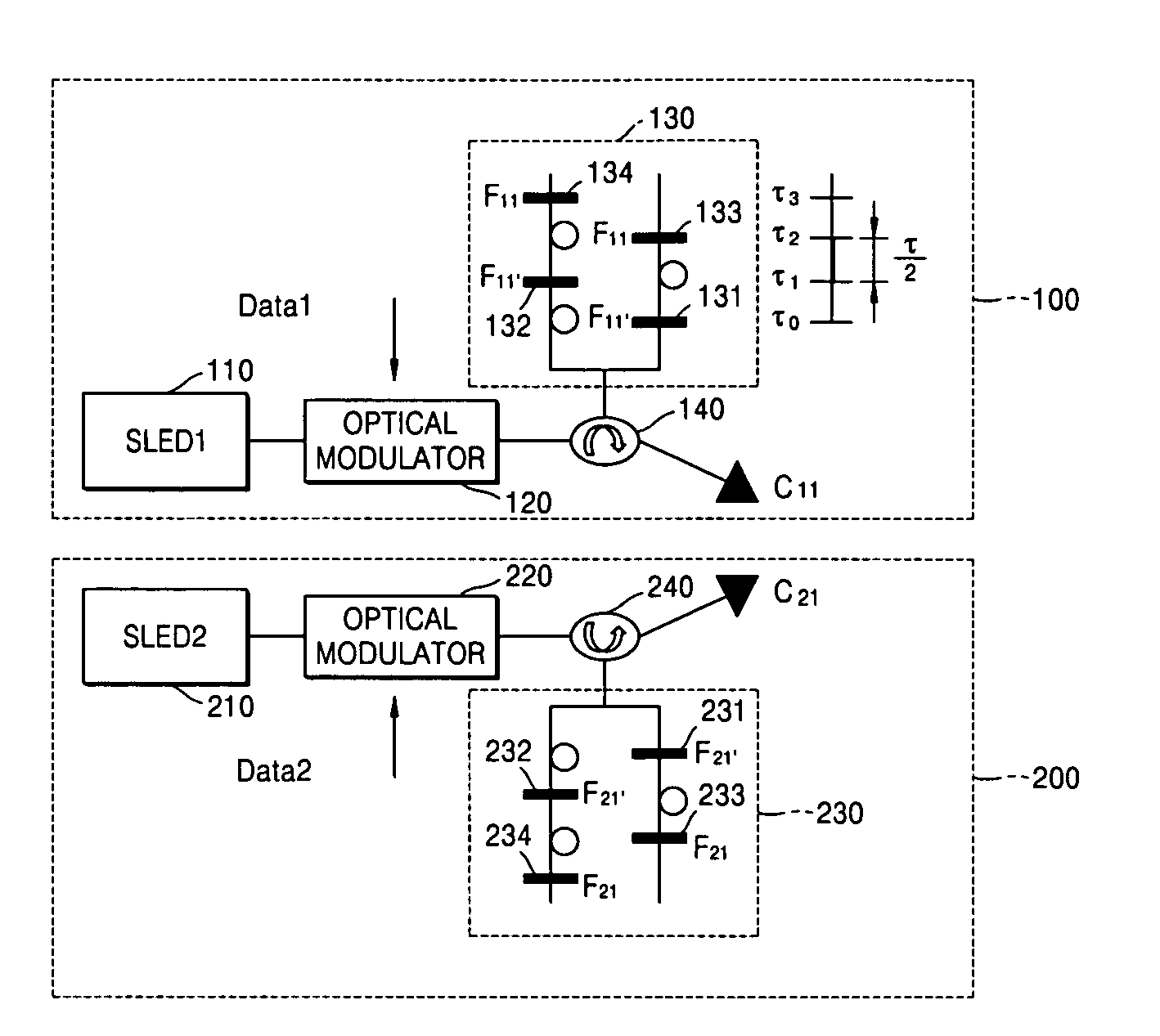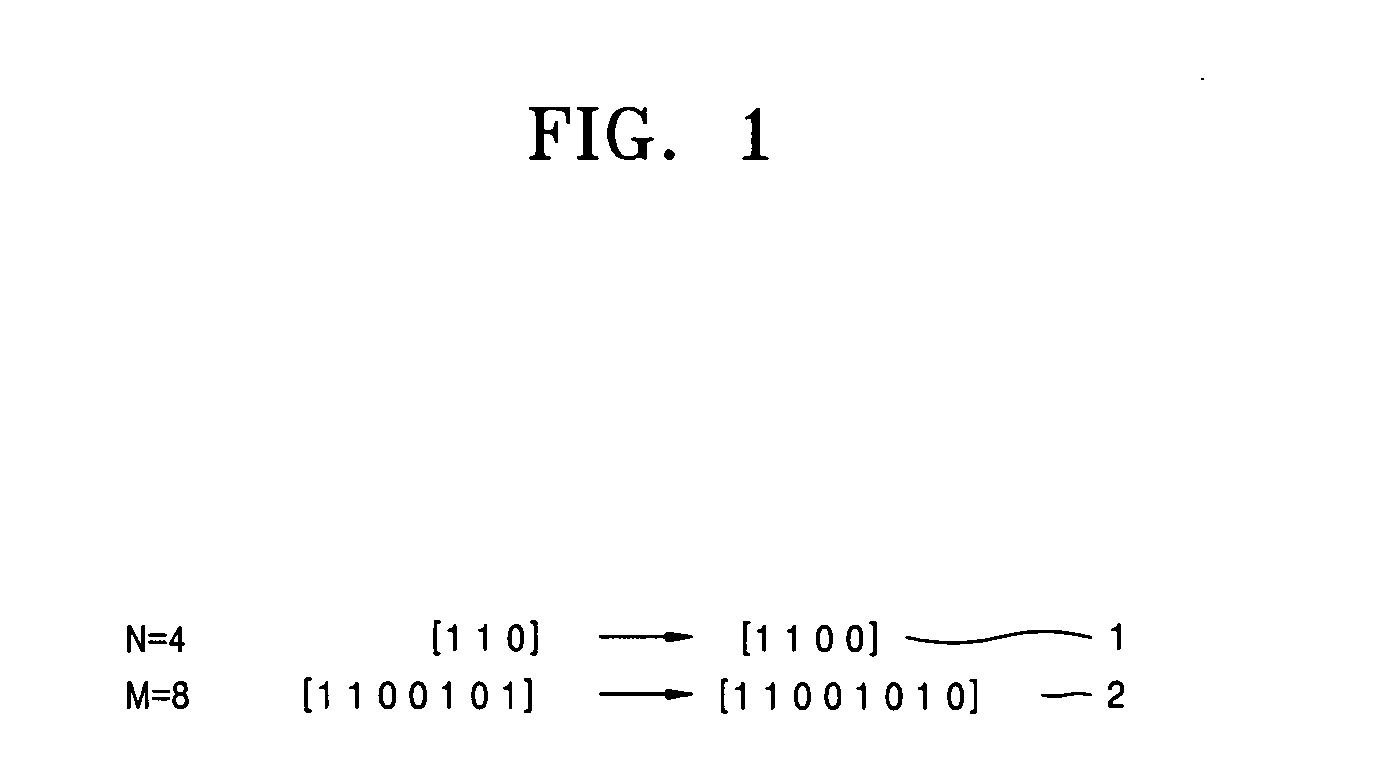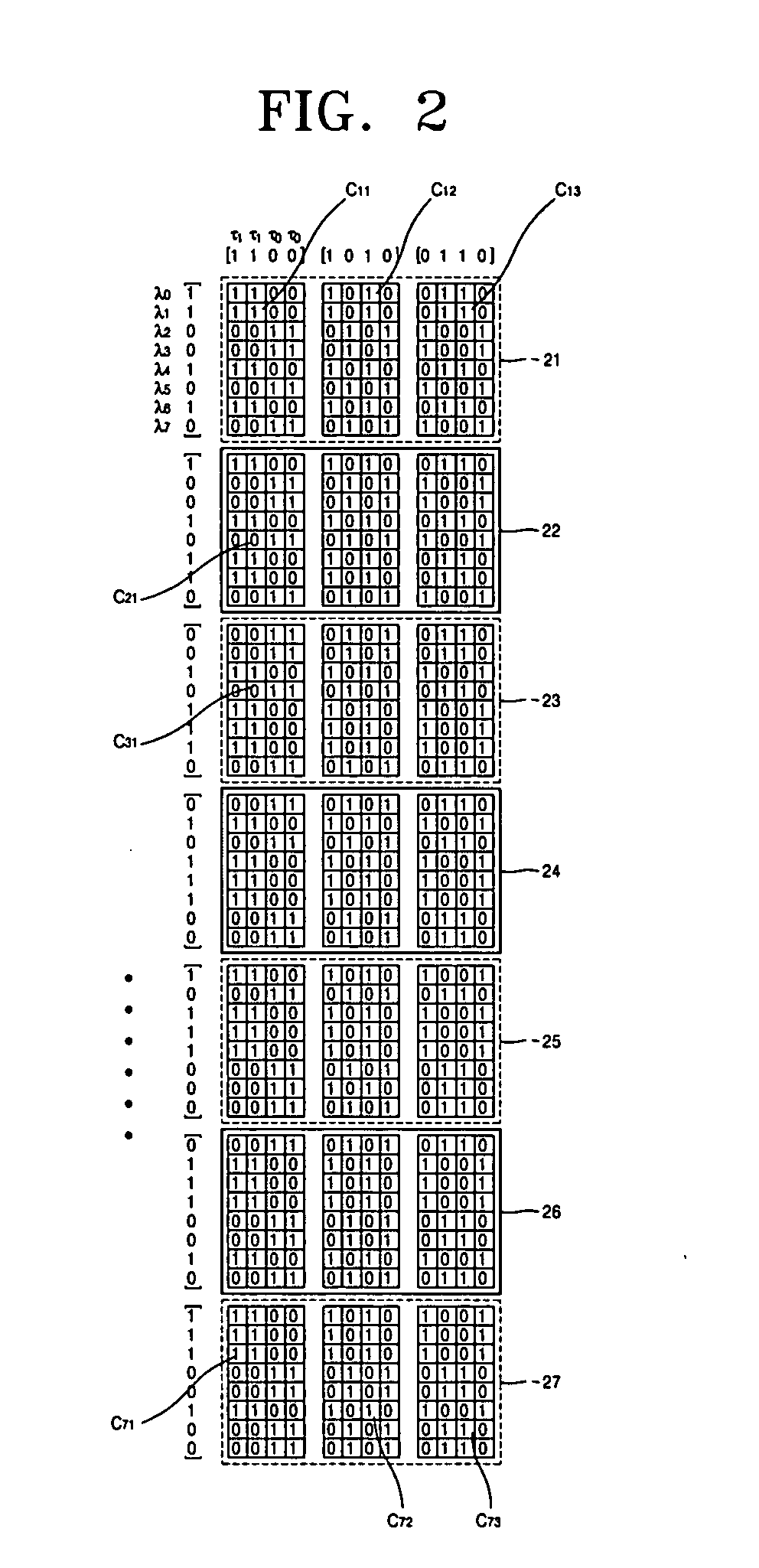Two-dimensional wavelength/time optical CDMA system adopting balanced-modified pseudo random noise matrix codes
a two-dimensional wavelength/time optical code division and pseudo random noise technology, applied in the field of optical communication system, can solve problems such as non-zero ber limit of multiple-access interference (mai)
- Summary
- Abstract
- Description
- Claims
- Application Information
AI Technical Summary
Benefits of technology
Problems solved by technology
Method used
Image
Examples
Embodiment Construction
[0024] Hereinafter, the present invention will be described in detail by explaining preferred embodiments of the invention with reference to the attached drawings.
[0025]FIG. 1 is a diagram showing one-dimensional PN codes and a modified PN (mPN) codes. Referring to FIG. 1, mPN codes 1 and 2 are generated from PN codes and the lengths are N=4 and M=8.
[0026] In order to encrypt a wavelength domain and a time domain, respectively, two independent mPN codes are selected. The conventional PN codes which are mainly used to distinguish mobile stations (terminals) have a characteristic that the difference of the numbers of 1's and 0's is always 1. Meanwhile, mPN codes are formed so that the numbers of 1's and 0's are identical. That is, as shown in FIG. 1, by adding stuff chip ‘0’ in an arbitrary location of a PN code so as to make the numbers of 1's and 0's identical, an mPN code is formed. At this time, the location of the added stuff chip does not matter but the stuff chip should be ad...
PUM
 Login to View More
Login to View More Abstract
Description
Claims
Application Information
 Login to View More
Login to View More - R&D
- Intellectual Property
- Life Sciences
- Materials
- Tech Scout
- Unparalleled Data Quality
- Higher Quality Content
- 60% Fewer Hallucinations
Browse by: Latest US Patents, China's latest patents, Technical Efficacy Thesaurus, Application Domain, Technology Topic, Popular Technical Reports.
© 2025 PatSnap. All rights reserved.Legal|Privacy policy|Modern Slavery Act Transparency Statement|Sitemap|About US| Contact US: help@patsnap.com



